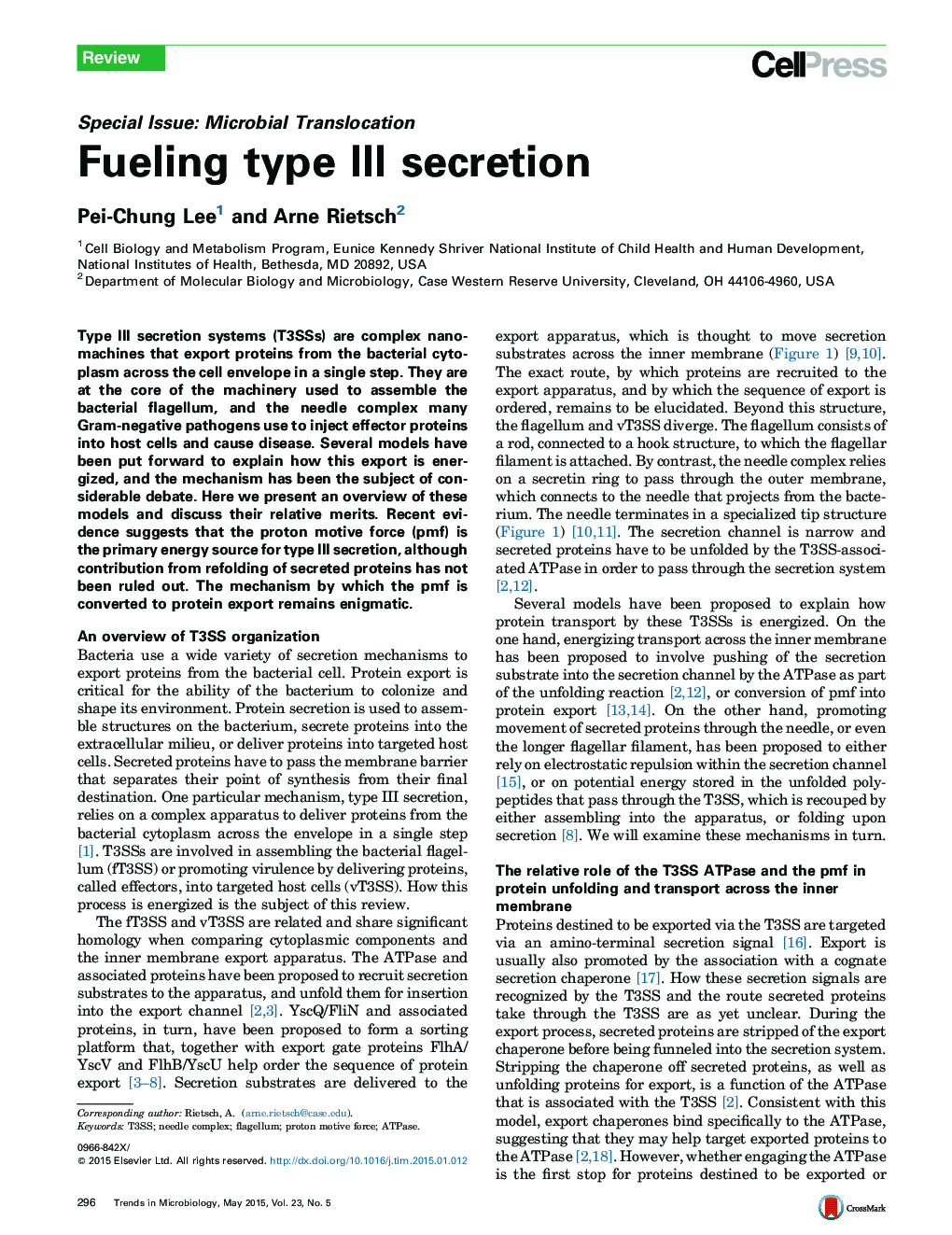| Article ID | Journal | Published Year | Pages | File Type |
|---|---|---|---|---|
| 3421862 | Trends in Microbiology | 2015 | 5 Pages |
•The proton motive force (pmf) energizes the rate-limiting step of type III secretion.•The type III secretion system (T3SS) can change the efficiency of pmf utilization to modulate protein export speed.•The ATPase likely renders secreted protein export competent by unfolding them.
Type III secretion systems (T3SSs) are complex nanomachines that export proteins from the bacterial cytoplasm across the cell envelope in a single step. They are at the core of the machinery used to assemble the bacterial flagellum, and the needle complex many Gram-negative pathogens use to inject effector proteins into host cells and cause disease. Several models have been put forward to explain how this export is energized, and the mechanism has been the subject of considerable debate. Here we present an overview of these models and discuss their relative merits. Recent evidence suggests that the proton motive force (pmf) is the primary energy source for type III secretion, although contribution from refolding of secreted proteins has not been ruled out. The mechanism by which the pmf is converted to protein export remains enigmatic.
